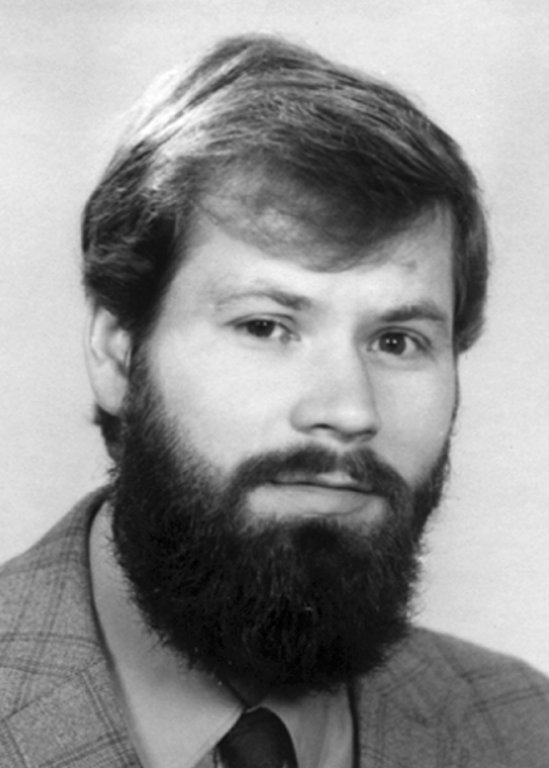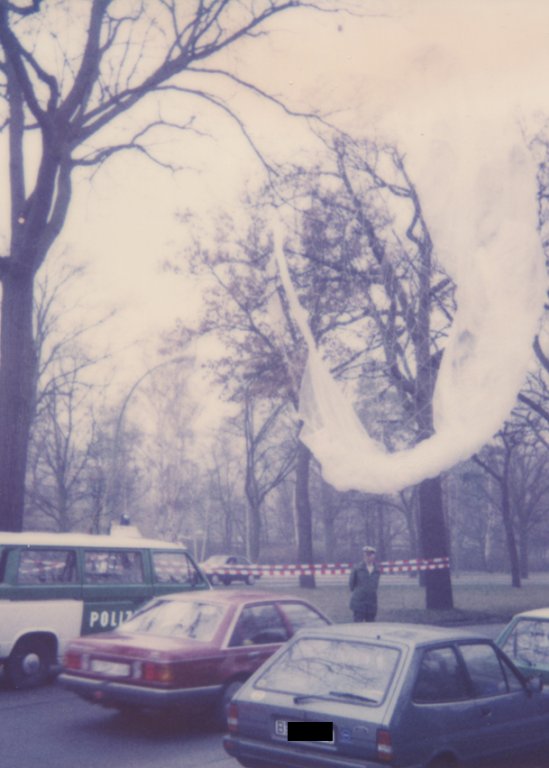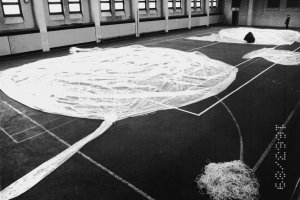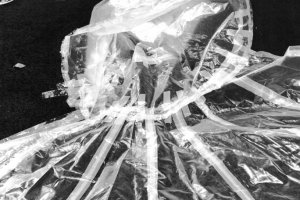born on August 29, 1956
fatally injured on March 8, 1989
in a hot-air balloon crash in Berlin-Zehlendorf
after flying over the sector border between Berlin-Pankow and Berlin-Reinickendorf
Freudenberg, Winfried
Winfried Freudenberg was born on August 29, 1956 in Osterwieck in the Harz mountains and grew up in the Saxony-Anhalt community of Lüttgenrode, which was located close to the inner-German border. After completing an electrician apprenticeship, he took evening classes at the Halberstadt adult education center to acquire his high school degree. He then studied information technology in Ilmenau and graduated with an electrical engineering degree. [27] He met the chemistry student Sabine W. in a student club. The young couple married in the fall of 1988 but soon recognized that few career prospects awaited them in East Germany. The two young adults were no longer willing to accept that the state denied them the opportunity to „travel, attend conferences, conduct research and have contact with people in the western countries," Sabine Freudenberg explained later. The fact that he had lived within the border area, right by the barbed wire, „just a few hundred meters from another country that he could never enter," had strongly influenced her husband’s desire for freedom. [28]
During a visit to relatives in West Germany two weeks before his wedding, Winfried Freudenberg expressed a determination to leave East Germany, but not without his wife. [29] Right after the wedding the couple began planning their escape with a gas balloon. To obtain the necessary natural gas needed for the balloon, Winfried Freudenberg took a job at an energy combine in the gas supply department and moved with his wife to an apartment in the East Berlin district of Prenzlauer Berg. The couple bought small, inconspicuous amounts of polyethylene sheets, a material commonly used for cold-frame windows and for tents. By taping 13-meter-long and two-and-a-half-meter-wide strips of the material with a special adhesive foil, the Freudenbergs began assembling a balloon, 13 meters high and 11 meters in diameter, in their apartment in January 1989. They wrapped the balloon in a net made of packaging string. [30] Winfried Freudenberg chose not to have any contact with his relatives while they were constructing the balloon - behavior which puzzled them at the time. In retrospect they understand that he had wanted to protect them from having any knowledge about the escape plan since this might have gotten them into trouble with the authorities. By February the couple had completed all the preparations and began waiting for favorable wind conditions.
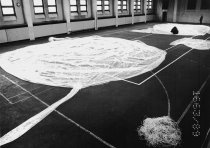 Moderate northeast wind was blowing on the evening of March 7. [31] The Freudenbergs packed the balloon, ballast and everything else that they wanted to take with them into a Trabant and drove to a Berlin gas supply control station near the Blankenburg S-Bahn station in the north of Berlin. Winfried Freudenberg had a key to the facility that he needed for his job. Just before midnight he began tapping gas from the station and filling the balloon with natural gas. The balloon slowly began to fill up, and a good hour later was clearly visible in the dark.
Moderate northeast wind was blowing on the evening of March 7. [31] The Freudenbergs packed the balloon, ballast and everything else that they wanted to take with them into a Trabant and drove to a Berlin gas supply control station near the Blankenburg S-Bahn station in the north of Berlin. Winfried Freudenberg had a key to the facility that he needed for his job. Just before midnight he began tapping gas from the station and filling the balloon with natural gas. The balloon slowly began to fill up, and a good hour later was clearly visible in the dark.
The flight with the balloon probably would have succeeded if it had not been for a young worker who was working as a part-time waiter. He had just gotten off work at 1:30 in the morning and was on his way home when he saw the balloon from a distance of about 500 to 600 meters. He knew that „East German citizens had managed to get away using a balloon" in the past and he later testified that this is what led him to notify the East German police. [32]
It was just past 2 a.m. when a police car slowed down in front of the grounds of the control station. Fearing that the balloon did not yet have enough gas to carry two people, they decided that Winfried Freudenberg should take off by himself. He cut the tether cables and rose up into the night sky. Shortly after launching, the ballast bags rubbed against a high-voltage cable striking sparks and causing a blackout in the neighboring garden settlement. Because gas was leaking, the East German policemen decided against shooting at the fugitive. They feared that the gas might cause an explosion. [33]
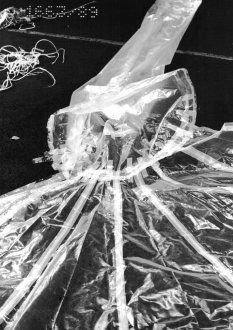 The hasty take-off had unexpected consequences. Without the weight of his wife, Winfried Freudenberg rose much faster and higher than he had intended. A reconstruction of his flight route concluded that he flew over the border to West Berlin unnoticed at 20 kilometers an hour and arrived at the Tegel air field where he probably tried to land. But the release cord that was supposed to allow the balloon to open and sink appeared initially not to have functioned. He either lost ballast or he threw it down to the airport to draw attention to his emergency situation. But this loss of weight caused him to rise even higher. Over Tegel he got caught in a northern current, and evidence suggests that he had reached an altitude of at least 2000 meters since that was the height at which this other wind direction was noticeable. Winfried Freudenberg had calculated that the flight would take a good half hour -- instead he was aloft for many hours. Floating at great heights and in freezing temperatures, he cowered over a wooden post above Berlin, first traveling westward, then southward. At daybreak a pedestrian saw him floating over the Teufelsberg hill and thought it was a weather balloon.
The hasty take-off had unexpected consequences. Without the weight of his wife, Winfried Freudenberg rose much faster and higher than he had intended. A reconstruction of his flight route concluded that he flew over the border to West Berlin unnoticed at 20 kilometers an hour and arrived at the Tegel air field where he probably tried to land. But the release cord that was supposed to allow the balloon to open and sink appeared initially not to have functioned. He either lost ballast or he threw it down to the airport to draw attention to his emergency situation. But this loss of weight caused him to rise even higher. Over Tegel he got caught in a northern current, and evidence suggests that he had reached an altitude of at least 2000 meters since that was the height at which this other wind direction was noticeable. Winfried Freudenberg had calculated that the flight would take a good half hour -- instead he was aloft for many hours. Floating at great heights and in freezing temperatures, he cowered over a wooden post above Berlin, first traveling westward, then southward. At daybreak a pedestrian saw him floating over the Teufelsberg hill and thought it was a weather balloon.
At approximately 7:30 in the morning, Winfried Freudenberg flew over the West Berlin district of Zehlendorf. Just another few hundred meters and he would have reached Kleinmachnow and been back in East German territory. The exact cause of the crash is not known, but the West Berlin police surmised that he had in the end managed to let out enough gas to cause the balloon to descend rapidly. Wind currents gave him another boost upward making the balloon brake suddenly. This, in turn, spun Winfried Freudenberg out of his position and caused him to fall to the ground. [34] The empty balloon landed in the branches of a tree on Potsdamer Chaussee at the corner of Spanische Allee. Winfried Freudenberg crashed down into the garden of a villa just a few hundred meters away. Almost every bone in his body was broken and no internal organ was left uninjured. He died immediately.
Two men from the East German secret police were waiting for Sabine Freudenberg when she arrived at their apartment in Prenzlauer Berg in the early morning. Personal documents had flown out of the balloon at take-off revealing the couple’s identity and address. Sabine Freudenberg was arrested and interrogated. She was charged with „attempting to breach the border."
At the same time the East German secret police opened a comprehensive control and surveillance operation against everyone acquainted with the Freudenbergs, including against relatives in the East and in the West, against friends, acquaintances and colleagues from their neighborhood and workplace. They also attempted to investigate western journalists and prevent them from reporting from East Germany. [35] But the effectiveness of all these measures was minimized by the immense shock that this daring escape attempt and its fatal end caused in both the West and the East. Just a few weeks earlier, the East German leaders had signed the Vienna CSCE document which obliged them to respect the right of every individual to leave any country, including his own, and allow for the right of that individual to return to his own country unhindered. The document obliged the country to not only legally guarantee this right, but also to have its implementation monitored. [36] Despite all the counter-measure plans developed by the Stasi, the East German leadership was still having to defend itself to the international world just as it had after Chris Gueffroy was murdered. It was also impossible for the Stasi to keep its dealings with Winfried Freudenberg’s wife a secret.
The attorney’s office Vogel, which represented Sabine Freudenberg, suggested that the West German federal government might be willing to pay ransom for her release to the West, but she rejected this option. In the end she was sentenced to „only" three years probation. She received amnesty on October 27, 1989. [37]
Winfried Freudenberg’s body was delivered from West Berlin to East Berlin on April 7, 1989. An autopsy was conducted in the Institute for Forensic Medicine of Humboldt University after which the body was cremated. Winfried Freudenberg was buried on April 24, 1989 in Lüttgenrode amidst immense public sympathy and under the conspiratorial surveillance of the East German secret police. „Measures to prevent hostile negative activities in connection with the funeral were introduced. Their effectiveness benefited from the favorable burial location within the border security area." [38]
This kind of burial and advantageous situation would not present itself again. Winfried Freudenberg was the last person to die in Berlin as a consequence of the Berlin Wall, which fell exactly eight months and one day after his tragic accident.
In 2012, a memorial column for Winfried Freudenberg was dedicated on Erdmann-Graeser-Weg in Zehlendorf, not far from the site of his crash. [39]
Martin Ahrends/Udo Baron/Hans-Hermann Hertle
During a visit to relatives in West Germany two weeks before his wedding, Winfried Freudenberg expressed a determination to leave East Germany, but not without his wife. [29] Right after the wedding the couple began planning their escape with a gas balloon. To obtain the necessary natural gas needed for the balloon, Winfried Freudenberg took a job at an energy combine in the gas supply department and moved with his wife to an apartment in the East Berlin district of Prenzlauer Berg. The couple bought small, inconspicuous amounts of polyethylene sheets, a material commonly used for cold-frame windows and for tents. By taping 13-meter-long and two-and-a-half-meter-wide strips of the material with a special adhesive foil, the Freudenbergs began assembling a balloon, 13 meters high and 11 meters in diameter, in their apartment in January 1989. They wrapped the balloon in a net made of packaging string. [30] Winfried Freudenberg chose not to have any contact with his relatives while they were constructing the balloon - behavior which puzzled them at the time. In retrospect they understand that he had wanted to protect them from having any knowledge about the escape plan since this might have gotten them into trouble with the authorities. By February the couple had completed all the preparations and began waiting for favorable wind conditions.
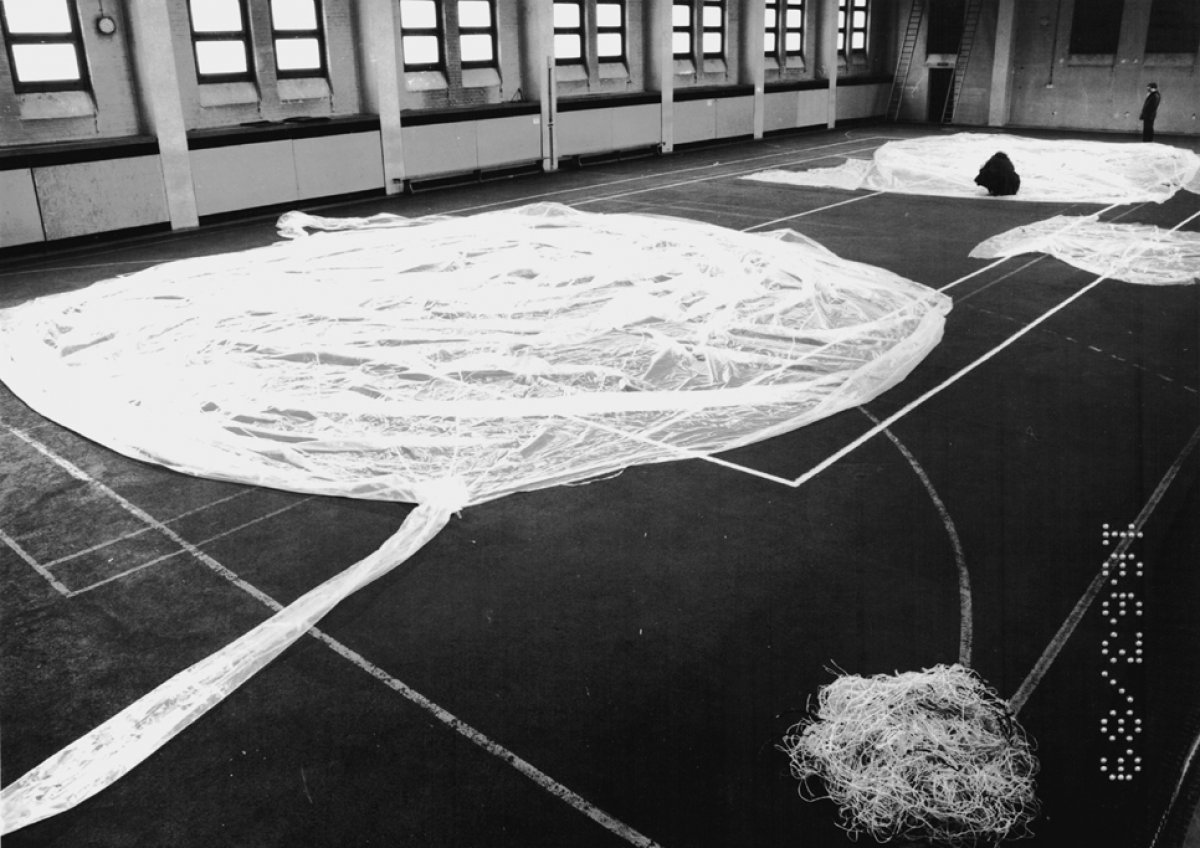
Winfried Freudenberg: The escape balloon spread out in a sports hall (Photo: Polizeihistorische Sammlung/Der Polizeipräsident in Berlin)
The flight with the balloon probably would have succeeded if it had not been for a young worker who was working as a part-time waiter. He had just gotten off work at 1:30 in the morning and was on his way home when he saw the balloon from a distance of about 500 to 600 meters. He knew that „East German citizens had managed to get away using a balloon" in the past and he later testified that this is what led him to notify the East German police. [32]
It was just past 2 a.m. when a police car slowed down in front of the grounds of the control station. Fearing that the balloon did not yet have enough gas to carry two people, they decided that Winfried Freudenberg should take off by himself. He cut the tether cables and rose up into the night sky. Shortly after launching, the ballast bags rubbed against a high-voltage cable striking sparks and causing a blackout in the neighboring garden settlement. Because gas was leaking, the East German policemen decided against shooting at the fugitive. They feared that the gas might cause an explosion. [33]
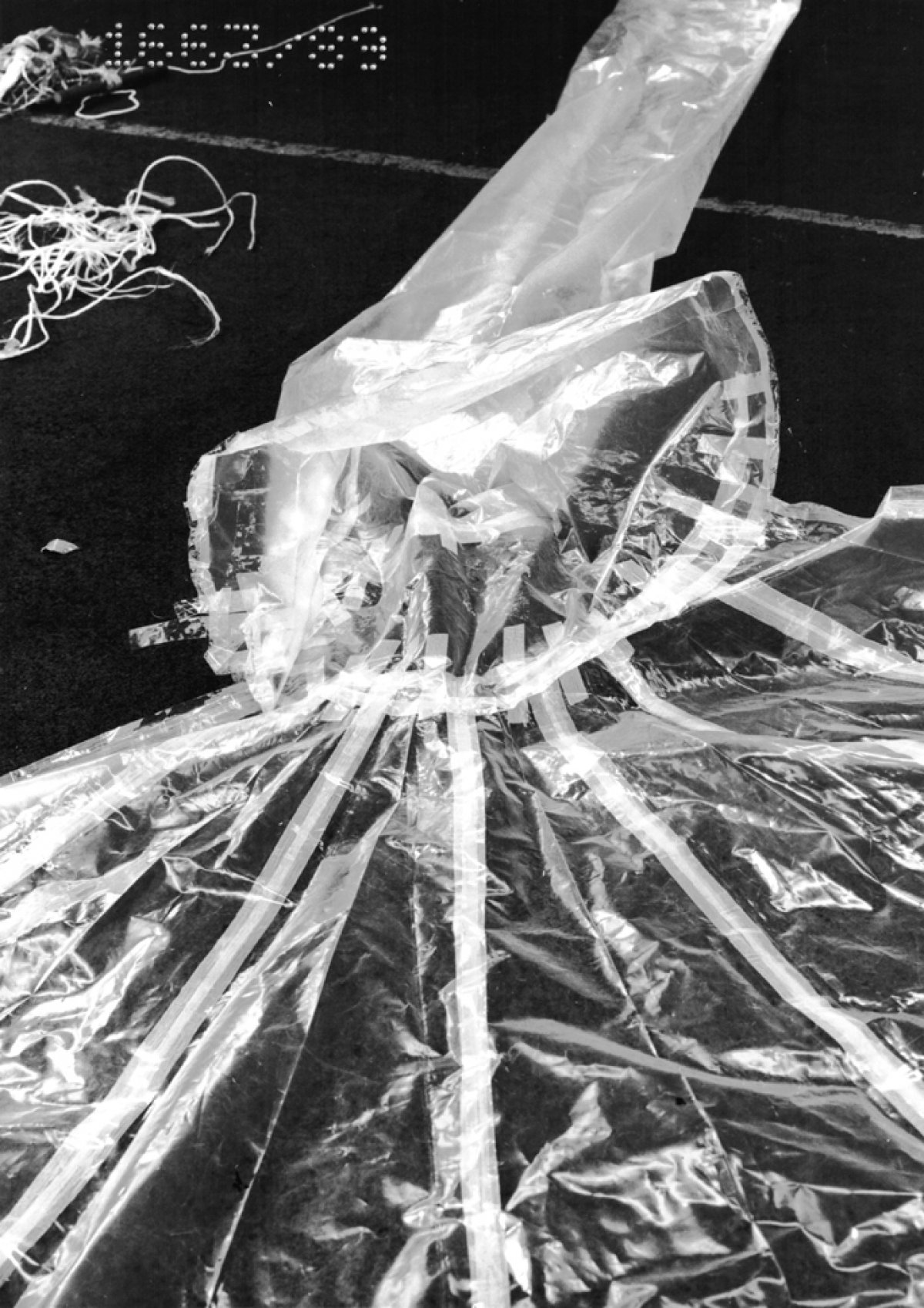
Winfried Freudenberg: Escape balloon foil (Photo: Polizeihistorische Sammlung/Der Polizeipräsident in Berlin)
At approximately 7:30 in the morning, Winfried Freudenberg flew over the West Berlin district of Zehlendorf. Just another few hundred meters and he would have reached Kleinmachnow and been back in East German territory. The exact cause of the crash is not known, but the West Berlin police surmised that he had in the end managed to let out enough gas to cause the balloon to descend rapidly. Wind currents gave him another boost upward making the balloon brake suddenly. This, in turn, spun Winfried Freudenberg out of his position and caused him to fall to the ground. [34] The empty balloon landed in the branches of a tree on Potsdamer Chaussee at the corner of Spanische Allee. Winfried Freudenberg crashed down into the garden of a villa just a few hundred meters away. Almost every bone in his body was broken and no internal organ was left uninjured. He died immediately.
Two men from the East German secret police were waiting for Sabine Freudenberg when she arrived at their apartment in Prenzlauer Berg in the early morning. Personal documents had flown out of the balloon at take-off revealing the couple’s identity and address. Sabine Freudenberg was arrested and interrogated. She was charged with „attempting to breach the border."
At the same time the East German secret police opened a comprehensive control and surveillance operation against everyone acquainted with the Freudenbergs, including against relatives in the East and in the West, against friends, acquaintances and colleagues from their neighborhood and workplace. They also attempted to investigate western journalists and prevent them from reporting from East Germany. [35] But the effectiveness of all these measures was minimized by the immense shock that this daring escape attempt and its fatal end caused in both the West and the East. Just a few weeks earlier, the East German leaders had signed the Vienna CSCE document which obliged them to respect the right of every individual to leave any country, including his own, and allow for the right of that individual to return to his own country unhindered. The document obliged the country to not only legally guarantee this right, but also to have its implementation monitored. [36] Despite all the counter-measure plans developed by the Stasi, the East German leadership was still having to defend itself to the international world just as it had after Chris Gueffroy was murdered. It was also impossible for the Stasi to keep its dealings with Winfried Freudenberg’s wife a secret.
The attorney’s office Vogel, which represented Sabine Freudenberg, suggested that the West German federal government might be willing to pay ransom for her release to the West, but she rejected this option. In the end she was sentenced to „only" three years probation. She received amnesty on October 27, 1989. [37]
Winfried Freudenberg’s body was delivered from West Berlin to East Berlin on April 7, 1989. An autopsy was conducted in the Institute for Forensic Medicine of Humboldt University after which the body was cremated. Winfried Freudenberg was buried on April 24, 1989 in Lüttgenrode amidst immense public sympathy and under the conspiratorial surveillance of the East German secret police. „Measures to prevent hostile negative activities in connection with the funeral were introduced. Their effectiveness benefited from the favorable burial location within the border security area." [38]
This kind of burial and advantageous situation would not present itself again. Winfried Freudenberg was the last person to die in Berlin as a consequence of the Berlin Wall, which fell exactly eight months and one day after his tragic accident.
In 2012, a memorial column for Winfried Freudenberg was dedicated on Erdmann-Graeser-Weg in Zehlendorf, not far from the site of his crash. [39]
Martin Ahrends/Udo Baron/Hans-Hermann Hertle

